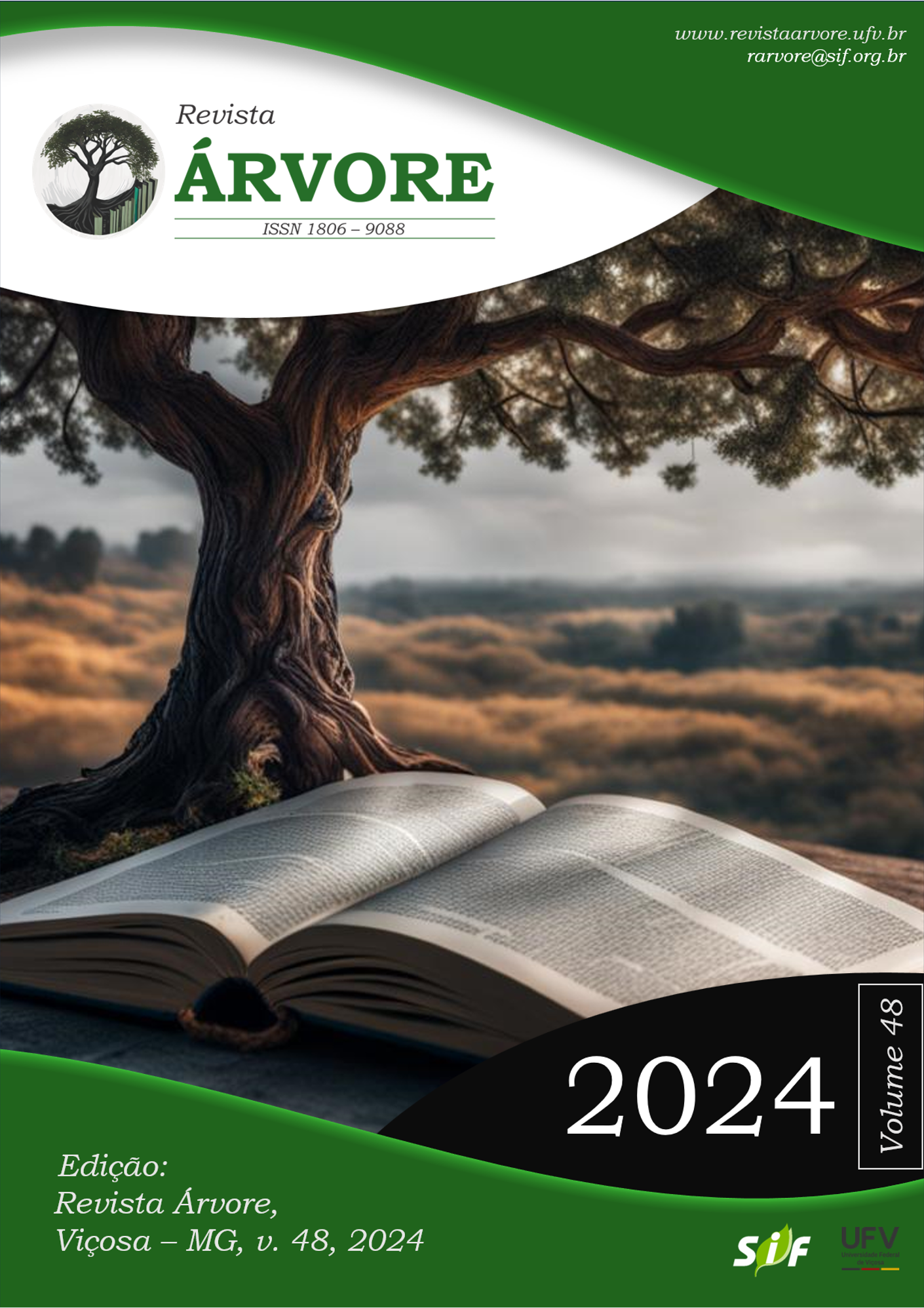Wood properties of three south american species planted in consortium
DOI:
https://doi.org/10.53661/1806-9088202448263803Keywords:
Forest management, Physicomechanical properties, Tropical Brazilian woodAbstract
The use of tropical wood species in reforestation can be an alternative resource to meet the demand from the industrial wood sector. However, this strategy remains very limited, even while tropical forests continue to be deliberately exploited for the selective extraction of native species of highly commercial value. To test the potential of tropical species in reforestation, it is first necessary to evaluate the production and quality of the wood produced. Therefore, this study aimed to evaluate the quality Astronium urundeuva, Astronium fraxinifolium and Terminalia argentea woods, all aged 22 years, from a heterogeneous plantation located in the municipality of Selvíria-MS. From each species, 15 trees were selected. A 10 cm thick disc was removed from the base of each tree. Samples were taken from the discs near the bark region to evaluate the anatomical characteristics and the physical and mechanical properties of the wood. According to the results, it was found that only compressive strength did not differ significantly among the species. Astronium urundeuva presented the highest values for basic density and apparent density, and Terminalia argentea presented the highest values for fiber length, fiber wall thickness and vessel element diameter. The best Pearson correlations were found for basic density and apparent density, both for Astronium fraxinifolium and Astronium urundeuva. The best regression equations obtained were correlations between basic density and apparent density for Astronium fraxinifolium and Astronium urundeuva. The linear model best fits the data for these correlations. The greater growth of Terminalia argentea trees caused lower wood density owing to the lower rate of competition among trees. Based on the results and according to wood strength standards, the three species can be classified in the D40 strength class. According to the obtained results, these can support information to be compared with some species used commercially for structural purposes and other uses.
Keywords: Forest management; Physicomechanical properties; Tropical Brazilian wood
Downloads
Published
How to Cite
Issue
Section
License
Copyright (c) 2024 Revista Árvore

This work is licensed under a Creative Commons Attribution 4.0 International License.
All authors agreed to submit the work to Revista Árvore and granted the exclusive license to publish the article. The authors affirm that it is an original work and has not been previously published elsewhere. The scientific content and opinions expressed in the article are the sole responsibility of the authors and reflect their opinions, not necessarily representing the opinions of the editorial board of Revista Árvore or of the Society of Forest Investigations (SIF).








